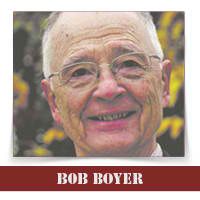
By: Bob Boyer
Two mysteries of the early days of the U.S. entry into World War II are very much Filipino-American mysteries: 1) the loss on the ground in one day of the entire U.S. Army Air Corps in the Philippines; 2) the focus on Pearl Harbor by President Franklyn D. Roosevelt in his “Infamy” speech to Congress, to the exclusion of the other U.S. Territories attacked by the Japanese. Daniel Immerwahr, early in his recent and insightful book about the America’s colonial “Empire,” explores these two prominent and perplexing mysteries, and their consequences.
I wrote in August about the Japanese catching the U.S. Army Air Corps flatfooted, nine hours after Pearl Harbor. I shared my discovery thanks to Immerwahr’s detailed statistics that the U.S. Air Corps was indeed formidable—and, of course, close to Manila. It could have, at the very least, taken a substantial toll of the invading land, air, and sea forces. Instead the Japanese were at liberty to bomb and strafe the U.S. Army (eighty to ninety percent of which consisted of Filipinos). That army made a remarkable and valiant defense even without air support. Immerwahr doesn’t solve the mystery but he clarifies the circumstances and enables readers to evaluate the dire consequences.
Immerwahr is equally compelling analyzing the second mystery related to the start of the war. He reminds readers that a large percentage (between 80 and 90) of the United States Army in the Philippines in 1942 was Filipino. Next he emphasizes the fate of all Filipinos at the surrender to the Japanese on May 6, 1942: “Sixteen million Filipinos—U.S. nationals who saluted the Stars and Stripes and looked to FDR as their commander in chief—fell under a foreign power.” So why did FDR not mention the Philippines in his speech on December 8? The Philippines was, like Hawaii, a U.S. Territory, and it had a much larger population. The practically total destruction of the U.S. Army Air Corps nine hours after Pearl Harbor and hours before Congress assembled to hear the president, was one of the greatest U.S. losses of World War Two, in some ways militarily more consequential than Pearl Harbor.
Roosevelt’s reasons remain a mystery, but Immerwahr’s conjectures are persuasive. He carefully examines FDR’s numerous successive drafts of the “Infamy” speech, now preserved in the National Archives in Washington, D.C. In the initial draft Roosevelt announced a “bombing in Hawaii and the Philippines,” but after hours of “tinkering” he had eliminated the Philippines entirely. Immerwahr assumes, with solid reason, that Roosevelt wanted to emphasize that the attack was on the United States. Hawaii was closer than the Philippines; it was the closest U.S. Pacific Island Territory to the mainland. Immerwahr also intimates that a further consideration for Roosevelt was that there were more white citizens on Hawaii proportionally than in the Philippines, or any of the other Territories. Hawaii looked more like the mainland.
Another reason for Roosevelt’s choice of Hawaii versus the Philippines was, doubtlessly, that Hawaii was closer to the U.S. mainland legally speaking. Hawaiians and Filipinos were both American nationals in 1942, but the Philippines had become a “Commonwealth” in 1935 (and even got its 1899 flag back eventually) and was scheduled, although without a date specifi ed, for independence (occurred in 1946). Hawaii had no such expectation. Hawaiians would remain American Nationals, making Hawaii, again, “closer” to the United States.
I am indebted to David Immerwahr for helping me understand the status of people living in U.S. Territories and of the significance of the term “nationals.” When I first read the phrase in the title of this column, I was surprised to realize, or be reminded, that when the U.S. buys, wins, or conquers and occupies land it becomes a “U.S. Territory,” and is so noted in the geography books. The inhabitants become, like it or not, U.S. “subjects,” a term somewhat later changed to “nationals,” which, of course, sounds much less colonial than “subjects.”
I expect to return to David Immerwahr in future. In fact, he recently wrote an opinion column for the Sunday “New York Times” in which he states that President Trump does not appear to understand that the U.S. no longer needs to buy or conquer a territory in order to expand its empire; it can simply acquire bases there, as it did in Greenland after World War II. It has also recently re-acquired bases in the Philippines. Bob Boyer likes to hear from readers at Robert.boyer@snc.edu.
 VIA Times – September 2019 Issue Vital News, Vibrant VIews for Asian Americans in Chicago & Midwest
VIA Times – September 2019 Issue Vital News, Vibrant VIews for Asian Americans in Chicago & Midwest

